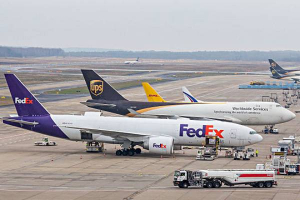World Air Cargo Forecast 2014–2015
Air cargo traffic rebounds after two years of either flat or slightly negative growth, with demand for air cargo transport beginning to grow slowly and steadily.
After two years of either flat or slightly negative traffic growth, demand for air cargo transport began to grow slowly and steadily during the second quarter of 2013.
The uptick in traffic continued into the second half of 2013 to end the year 0.9% above the 2012 traffic total.
Growth has continued to gather strength in 2014, nearly recovering the long-term trend rate.
World air cargo traffic is forecast to grow an average 4.7% per year over the next 20 years to reach a total of more than twice the number of revenue tonne-kilometers (RTK) logged in 2013.
The number of airplanes in the freighter fleet will increase by more than half by the end of the forecast period.
The traffic growth rates of 12 major air cargo markets in 2013 reveals a few crucial developments for the industry.
Domestic and international markets were surprisingly resilient in the face of weak economic and trade growth, helping to spur demand for standard-body freighter airplanes.
Traffic on international trade lanes connected to developing world markets generally rose compared with 2012 traffic levels. However, air trade contracted in both directions on nearly all the east-west trade lanes (those that connect Asia with Europe, Asia with North America, and Europe with North America).
Nearly 80% of long-haul air cargo traffic (routes longer than 4,500 kilometers) flows on these east-west trade lanes. Most of the cargo carried on these routes is transported on large wide body freighters.
Air cargo traffic on these vital routes slackened during the global economic downturn, causing the yields of most large-freighter operators to fall. In response to flagging demand and declining yields, operators curtailed large freighter flights, in some cases parking their wide body airplanes.
There were as many as 70 parked 747-400 and MD-11 freighters during the slowest period. In the third quarter of 2014, however, operators began to return these two models to service as traffi c volumes picked up.
What’s Related




Favorites





